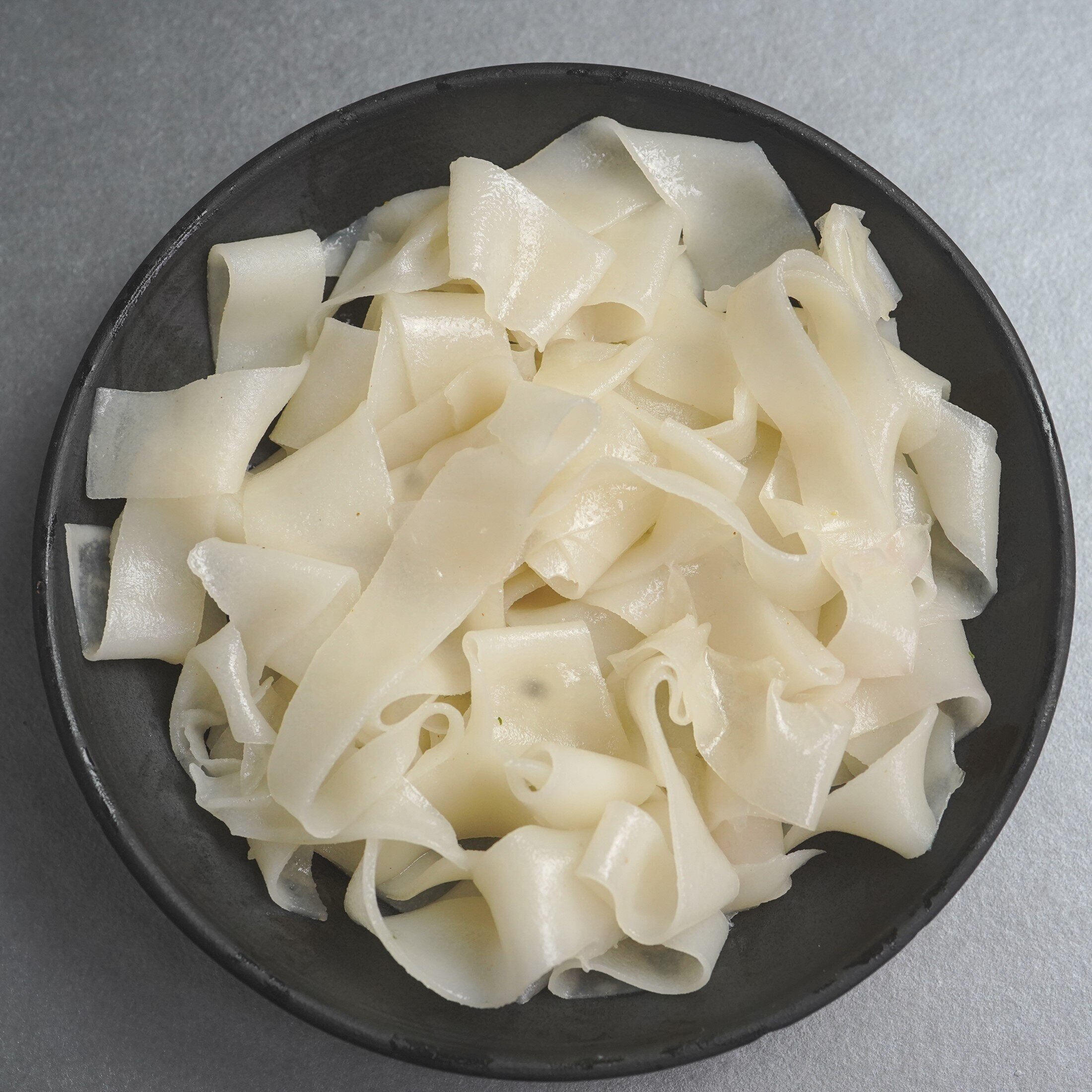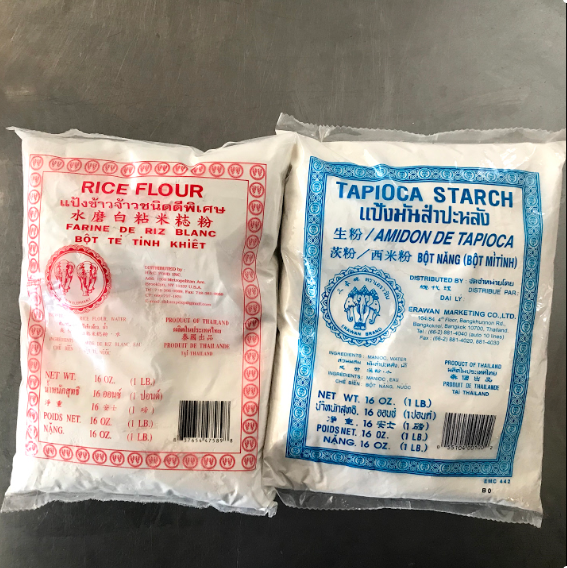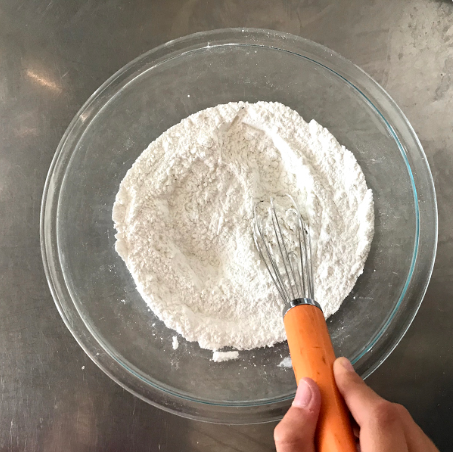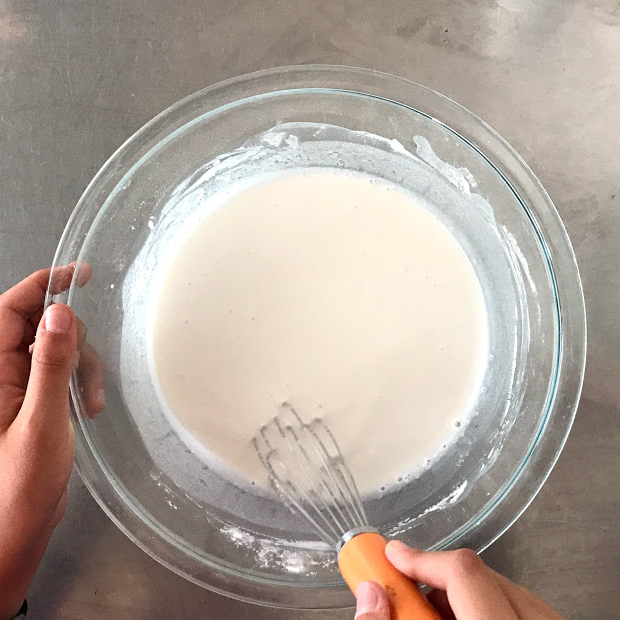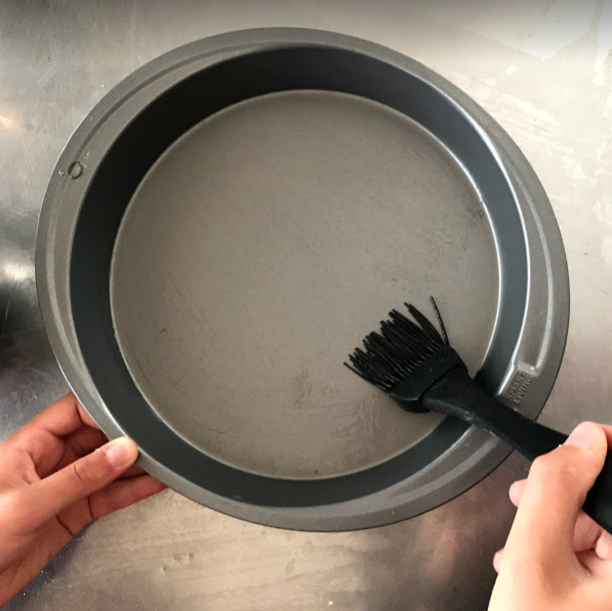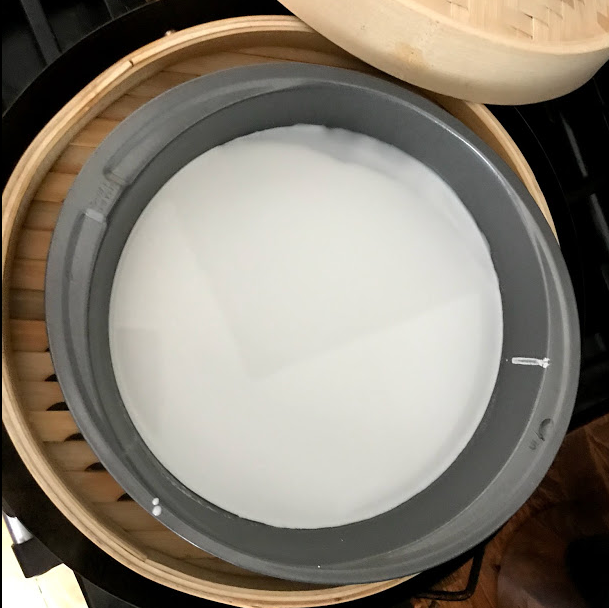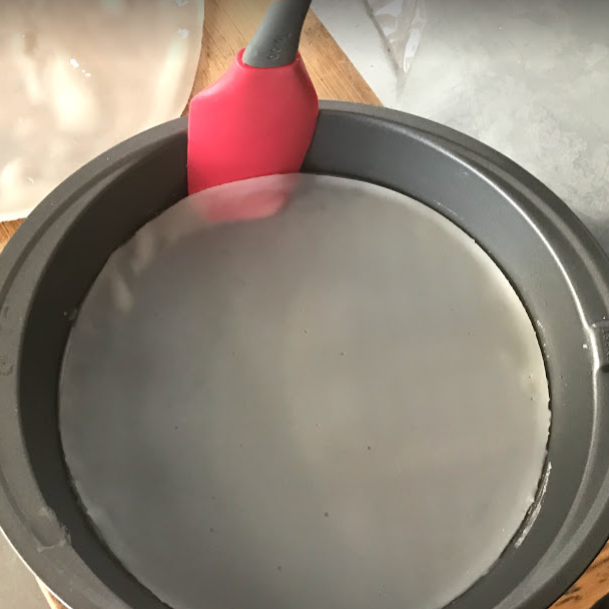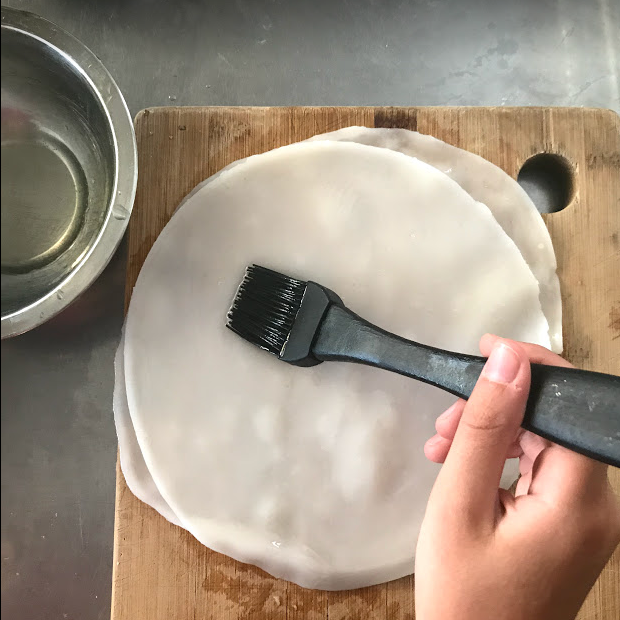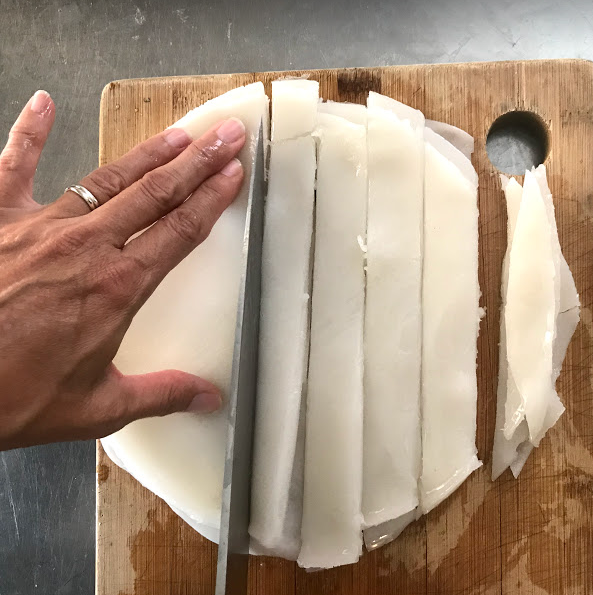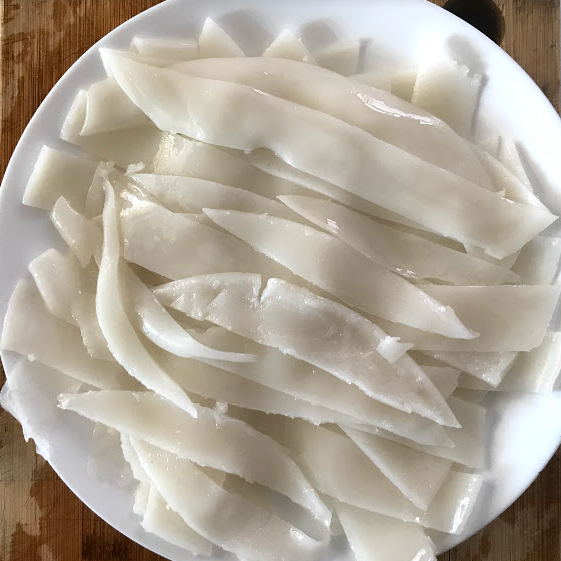Homemade Rice Noodles
/Rice noodles are a staple in so many dishes throughout Asia and they can take on many forms. From the thin Sen Lek noodles found in Pho to the broad Sen Yeh noodles used for Drunken Noodles, these all have the same starting point: rice flour, tapioca starch, and water. They are also fairly easy to make and well worth it if you can’t locate rice noodles easily in your local market.
Equipment Needed:
Pastry brush
Steamer (we are using a bamboo steamer in a wok)
2 flat bottomed metal pans (we are using 9-inch cake pans)
Wooden cutting board and chef knife
Ingredient list:
1 cup rice flour
1/2 cup tapioca starch
1 1/2 cups water
Canola or vegetable oil for coating pans
Make sure to select the correct type of Rice Flour. There are two main types found in any Asian Food specialty grocery store: Rice Flour and Glutenous Rice Flour. Glutenous Rice Flour creates a very sticky dough, while Rice Flour (pictured below) is ideal for your noodles.
Tapioca starch can be replaced with corn starch, but the flavor isn’t as nice. The role of the starch is to give a little bite to the tooth in the noodles. This ratio of the tapioca starch and rice flour can be adjusted up or down depending on how soft or firm you want the outcome to be.
Procedure
Measure the rice flour and tapioca starch into a bowl, mixing with a whisk.
Add just enough of the water to create a thick paste and knead out any lumps with a spoon or rubber spatula.
Once the thick batter is smooth, add the rest of the water and mix with a whisk. The consistency will be very similar to crepe batter.
Allow the batter to sit for 10-15 minutes while preparing the steamer basket and flat bottomed pans.
Set up the steamer basket in a wok filled with water and turn on to medium high heat.
Coat the bottom of two flat-bottom metal pans with canola or vegetable oil, wiping away excess. If too much is used, the oil will float to the top of the batter and create holes in your noodles. It’s very important that the pans are flat in order to get uniformly thick noodles. For this recipe, I used two 9-inch cake pans. One pan is enough, but two will allow the process to happen more quickly.
7. Make sure that the steamer basket is level on the stove and place the pan in the basket. Once steam is actively rising in your steamer, ladle about 1/2 cup of batter into the oiled pan and very lightly tap or tip the pan to settle the batter over the full bottom of the pan.
8. Place the lid on the basket and allow the batter to cook for about 5 minutes. If you are using a glass pan, increase this time to about 8 minutes. You will know it is done when it is translucent and matte in appearance.
9. Remove it from the heat and replace it with the other oiled pan, repeating the process.
10. While the second one cooks, tend to the first pan, releasing the cooked batter from the edges of the pan with a silicone spatula or an offset spatula.
11. Once the cooked batter is fully released, you can peel it up from the pan and gently set it flat onto a wood cutting board.
12. Coat the top generously with oil to keep it from sticking to the others as they are stacked on top.
13. Repeat the process, cooking one batch while removing the just cooked batch from its pan and re-oiling the pan for the next round of batter. This quantity of batter should provide 5 or 6 sheets depending upon how thick you are making them.
14. Once all are stacked (making sure to oil them to prevent them from sticking to each other), coat your knife with oil and cut the sheets into strips of a desired thickness. My goal was to use these for Drunken Noodles, so I cut them about 1/2 inch wide..
15. Separate the stacks into individual noodles and lay them flat until you are ready to use them in your dish.
Helpful tips:
Stir the batter well before filling the pan each time as the starch/flour likes to settle to the bottom of the bowl.
Make one sheet before filling the pan to cook the next one. This will allow you to adjust the amount of batter you are putting into the pan based upon your desired thickness.
Having too much steam in your steamer will result in a sheet that is very sticky and gooey on the bottom surface facing the pan. This makes it hard to peel from the pan, and it will stick to the other sheets if it is stacked on top of another. The best thing to do if this happens is to lay the sheet apart from the other sheets, gooey side up, and allow it to dry and harden a little before coating with oil and adding to your stack to be cut. Turn down your stove heat to reduce the amount of steam.
Do not use too much oil in your pans or you will create holes in your batter where the excess oil collects.
You may need to shim up your pan on one side while it is in your steamer if your stove is not level to avoid having noodle sheets are overly thick on one edge and too thin on the other. I actually used a carpenter’s level to adjust my steamer basket in my wok to help with the challenge of trying to get sheets that were evenly thick throughout.


